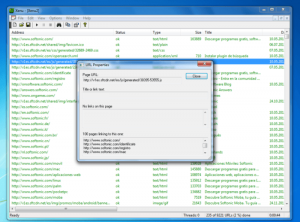— February 5, 2019

Last time we talked about finally getting rid of the annual employee survey and attempting some root cause analysis of what’s going on. I had a some lovely comments on that post, but a few private messages wondering about the data gap.
For a lot of organizations, workforce sentiment insights begin and end with the employee survey. Sure, you’ve got whatever comes up in exit interviews, plus the commentary on sites such as Glassdoor, but there’s a bit of anxiety that attends the loss of the annual survey. Fret not.
I have personally gone cold turkey on the annual data thing. I was in marketing and we had been doing an annual customer and market survey for decades, measuring attitudes about our company and awareness of our various products and services. It was like Christmas each July when we mucked through the data. Some good news here. Some bad news there. But plenty to underpin the next year’s marketing strategy and convince our Overlords that we weren’t making things up.
Going cold turkey
Such surveys are expensive and, like their internal counterparts, do little to dig into any kind of causation. When they took away our survey budget, we were devasted, not because the data changed much year to year, but because it was pretty much the only credible thing we had behind our planning.
But once we stopped whining, we realized we actually had a fair bit of data sitting right in front of us. We had all sorts of information from the website about page views, shopping carts, transaction value, shipping and returns. We had purchase histories, spending patterns, product usage, customer turnover, sales, revenue, cost of goods sold, customer ratings and, it turns out, a whole lot more. Was it as convenient as the annual survey? Nope. Did we have to figure out how to extract and analyze all this data goodness? Yup. Did we get it figured out? You bet.
Like the marketing department, HR is actually marinating in data about the workforce. The trick is to figure out what you have, how to get at it and what it means. For example, you have the basics on recruiting, such as roles open, roles filled, time to fill roles, cost of recruiting. That’s a no-brainer.
A thousand points of insight
But if you dig a little, you also have tons of insight into the candidate experience:
- How long does it take from application to acknowledgement?
- How long does it take to apply for a job on your website? What about from a mobile device?
- What percentage of candidates apply from a mobile device?
- How long does it take to schedule a screening interview?
- How long to meet the hiring manager?
- How many interviews, on average, do candidates attend?
- How many candidates drop out of the running along the way?
- What percentage accept or reject your offers?
- What are the reasons for rejection?
While candidate stuff is pretty straightforward, we can also look at onboarding. We know what 30-, 60-, 90-day turnover rates are, and there (hopefully) exists some decent exit interview data. We should also be able to see how many new employees worked through the compliance training, onboarding videos, benefits enrollment and other activities. A few SurveyMonkey polls should also reveal where the good and not-so-good moments in onboarding are happening.
Other employee touchpoints include benefits enrollments, training, compliance stuff, promotions, transfers and departures. All of which trigger some kind of interaction with the company, which means it creates data, which means it creates insights.
Having fun yet? The miracle of easy polls also gets us to some of the really cool stuff that even our annual survey can’t touch, like teamwork, friendships, productivity, work environment, culture, burnout, lousy managers, trust, health, sleep, irritating processes, remote work, parking and so on.
Got some change happening? Survey the crap out of that stuff! And none of that awareness tracking BS—awareness is not a helpful metric—what we want is behaviour change. Start measuring if employees are actually doing the thing you were hoping they would do now that the thing that was supposed to change actually changed:
- Are they using that new expense system?
- Is it taking more or less time to manage expenses?
- Have they enrolled in the new health plan?
- Did they watch that video?
- What did they think of the video?
- What percentage of hourly employees are using the new vacation tracking tool?
- How have commute times changed for employees who recently moved to a new location?
Your annual survey sure won’t tell you that stuff.
If the reason you are clinging to your decades-old employee survey is that it spits back data, time to rethink things. For the cost of that nasty old survey, you could probably automate a bunch of reporting, design some sick dashboards and build a view of your workforce that will actually help you get stuff done.
Business & Finance Articles on Business 2 Community
(32)






